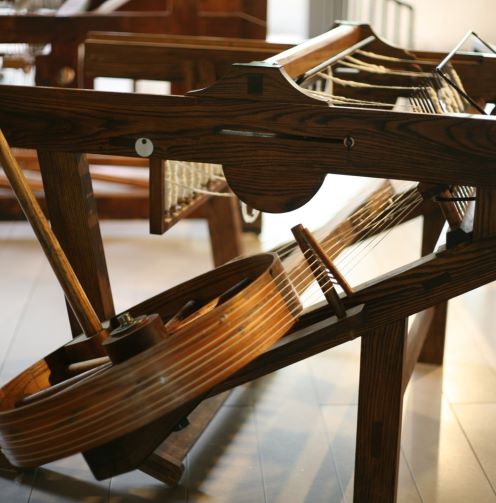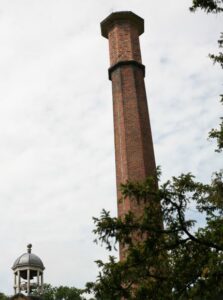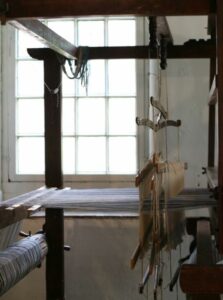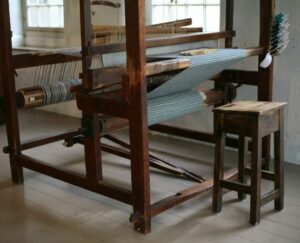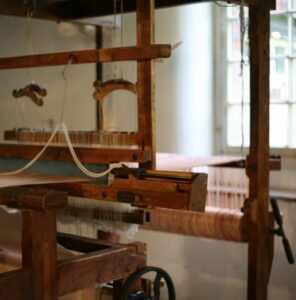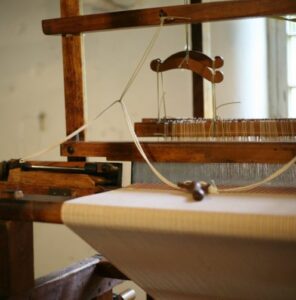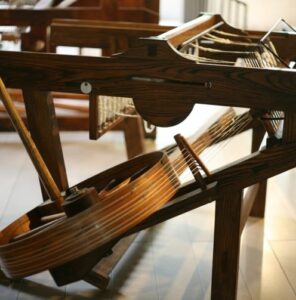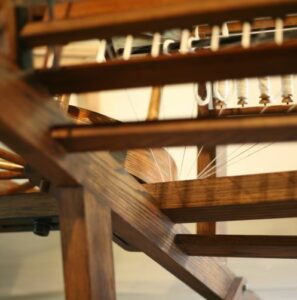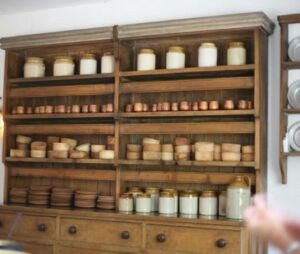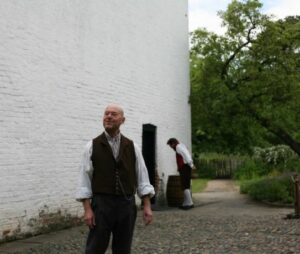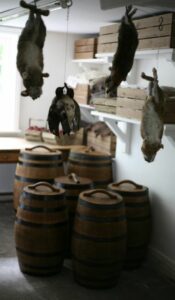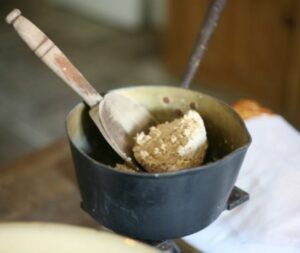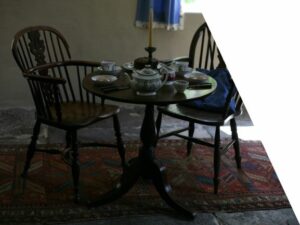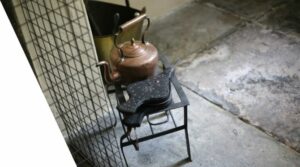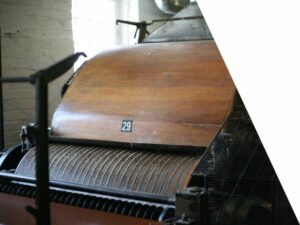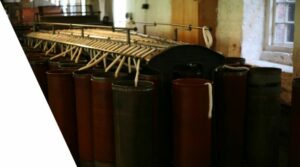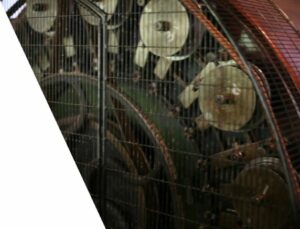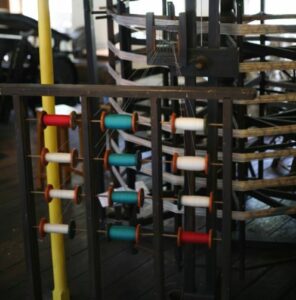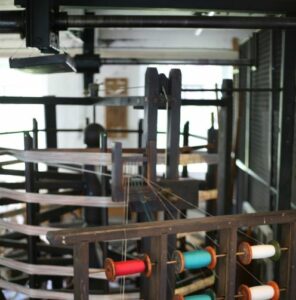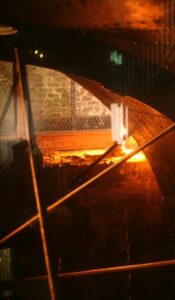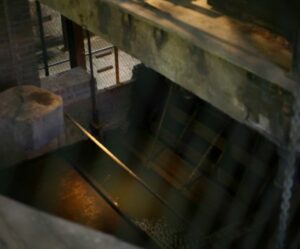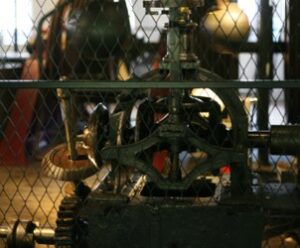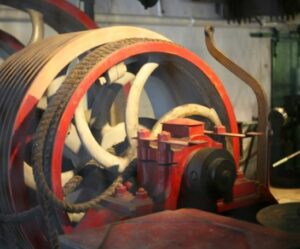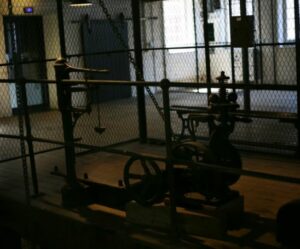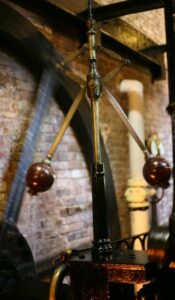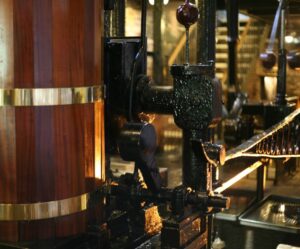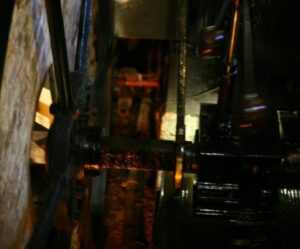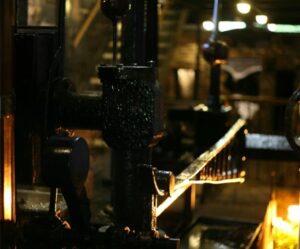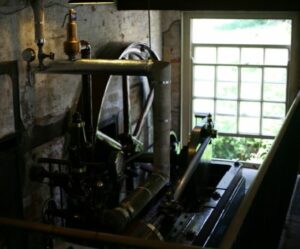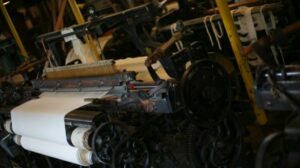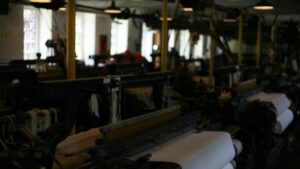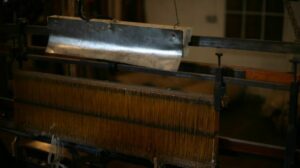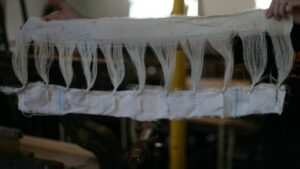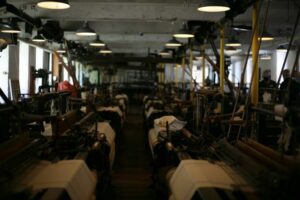All around Lancashire red brick mills highlight the sky. Today the majority stand in disuse. Blackburn, where I’m from had around 50 working mills in the 1950s. What were these workers doing in these now obsolete, empty, strange chimney like structures?
The answer is trickier than one might suppose. The chimney was indeed for smoke, as was (and is) the case for many households heating their houses with coal. The structures weren’t always built this way, they were smaller at first and later got bigger. Let me tell you why using the story of Quarry Bank Mill as an example.
The past
- In the past cloth was spun and woven at home. The father wove and apprenticed sons to weaving; mother taught daughters to spin and allocated subsidiary tasks to children. Everybody was important.
- There was a “putting out” system. Merchants went to peoples houses to “put out” yarn and collect the finished woven cloth. The cloth then continued its journey to the markets, and calico printers.
- The weaver was a middleman and had pride in his/her independence
Flying Shuttle (John Kay c. 1733)
- In the past, spinning was done on only one wheel, the distaff (see Muldrew 2012), and was very slow and labour intensive. Despite the low wage widespread work of women and children, there simply still wasn’t enough people to take part in the spinning process.
- Spinning was done in combination with agriculture, so imagine at harvest time, everybody (and farm servants) would be busy attending the land. In the putting out system with the fly shuttle, the weaver had to wait for the spinner to spin the yarn
- Around 1733 John Kay invented the flying shuttle. This doubled weaving productivity and put even more pressure on spinners.
Innovations
- This period in history is a key part of the “High Wage Economy” debate (Allen, 2001). High labour costs were the reason for the development of inventions in the North of England, despite initial low wages.
- Other historians (Humphries and Schneider 2019) counter that spinning was widespread, low wage low productivity work done by women and children in the countryside
Eureka!
- There were many failures in the drive to invent a better solution. The Royal Society gave money incentives for a new technology, but eventually gave up on the idea of a spinning device with multiple spindles. Many inventors went bankrupt, as it was simply too difficult.
- In 1765 James Hargreaves invented the spinning jenny (patent image in Google drive). Some of these patents are worth travelling to Manchester X library for. They are truly fantastic ideas.
- When cotton is spun it is stretched upwards, spun, goes onto a spindle and then back again, multiple times to make it stronger. Think of it like when you have some cotton fluff in your hand, and you roll it multiple times – it becomes stronger. It’s a lot easier when its humid too.
- If you’ve ever been to the North of England, you probably know to always pack an emergency waterproof, umbrella or just drive everywhere. It rains cats and dogs, and while for most of us it’s a pain, it was one natural factor that led to the localization of the cotton industry.
Quarry Bank Mill
- After the emergence of many innovations, Samuel Greg (whose parents were in the industry) decided to move to bigger premises in the idyllic Styal Village, now in Wilmslow, Manchester.
- However, who on earth was going to move to the middle of nowhere? Horse and cart or Oxen to the nearest pub? That would definitely be too pricey. Remember that these were the days before fast Wi-Fi connections enabled work from home in a pandemic.
- Samuel Greg had a problem, and he had a smart solution, easier solution: poor, pauper children. Apprentices were too much hassle, they always complained and lacked discipline – children could be trained, beaten and fined.
- Samuel Greg didn’t think he was doing anything wrong. In the 18th children were usually at work in the countryside, spinning and helping at an early age.
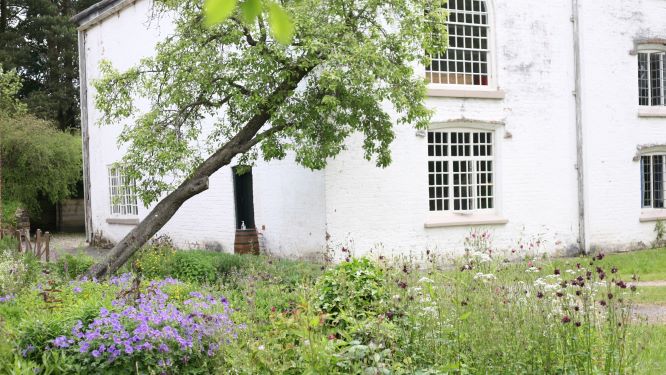
- Let’s pause there a second, as it seems to be a topic we always skip past. These are children we are talking about from around 8 or 9 years old. These children were living in the workhouses because of they were guilty of being poor. God bless the welfare state.
- The children were sometimes sent off by their parents to make a wage and sometimes recruited by Samuel Greg. He personally interviewed them, checked their teeth (an age requirement) and put them on probation. If they didn’t pass the test, were too unruly or insolent then they would be kicked out.
- But, like Jeremy Bentham, Samuel Greg realized that well fed workers are more productive workers. Kind of like a precursor to Google today, but 250 years ago. Thus the pantry with my favourite British cookbook banger – stale savoury porridge (as I’ve referenced here [link]) I had a go at onion porridge this in the lockdown, and its kind of like onion soup with substance. Can’t imagine Heston Blumenthal putting it on a menu anytime soon though.

Superintendents room
- As you can see, the super intendents were well paid. The furniture shows a level of extravagance few could afford in the 18th century.
- Anyway, going back to the children, compared to the workhouses, they were well fed. There was meat, (sourdough) bread – commercial yeast was only invented in the 1870s, and vegetables from the vegetable garden. Hurray!
- To keep the kids in line there were (people who lived and worked on site)
- Running away was punished the cleverest way. Not domestic violence, or at least that violent, but rather … a fine! The children were fined for being late and could only make money by working overtime. Some children were very industrious with one [X] saving up, investing in a ruler and later becoming a mechanic.
More tech (c. 1800)
- When cotton is picked and baled, it then needs to be cleaned before it can be spun. At some point the carding engine was invented
- Many different inventions came about in a similar period. The mule – where both water power and the spinning jenny were used in conjunction with each other, took off. And because these machines were so big, they no longer fit in people’s homes. Moreover, a greater power source than human power was needed.
- There was thus a drive towards centralization, with water power and then coal power. The cotton industry (apart from weaving) was no longer a cottage industry.
Structural differentiation in weaving
- spinning machinery led to demand for labour BUT weaving remained a putting out industry. According to Neil Smelser (1959), there was a value system; weavers were independent business men and usually they were also part time farmers.
- With the advent of the powerloom handloom weavers faced a struggle for survival.
- In the past they worked when they wanted to, now they worked under the rule of the clock. (See E.P. Thompson (1967) ).
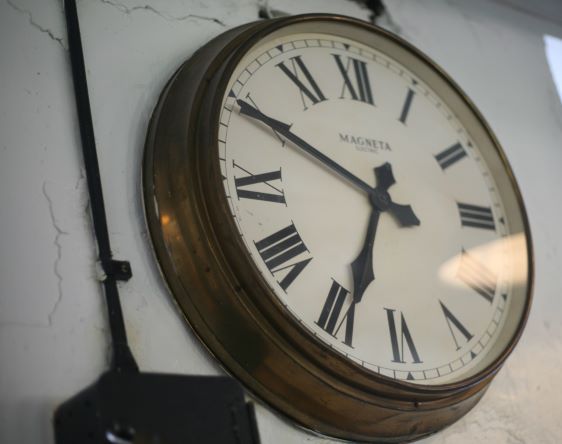
Conclusion
- Many people today in China, Bangladesh and India are still involved in these machine spinning and weaving practices.
- Their work has become more arduous and dull and they do not see the product from start to end.
- Others work as finishers, sewing up our jeans, t-shirts etc. There is always a race to the bottom to find the cheapest labour source – it even happened in Lancashire in the 1960 and 1970s with immigration of Gujarati’s.
- There is no fair trade approach to textile purchasing, only “organic” cotton – which at least means that the farmers may get a better price.
- Children continue to work in the textile industry today – only more transparency can stop this.
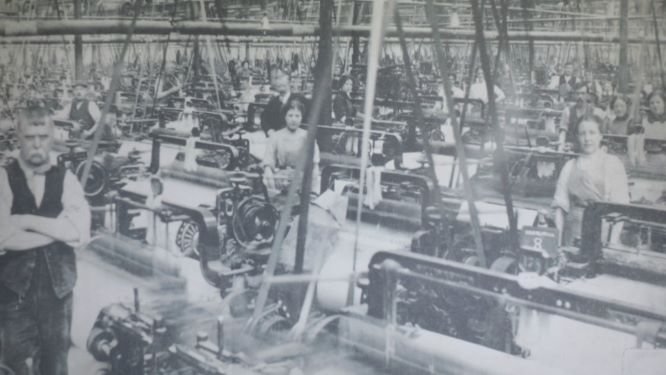
Finally, I would like to say thank you to the staff at Quarry Bank mill for their immense friendliness. I do recommend everybody takes a trip to the mill, now that it is open. See Quarry Bank mill website.
